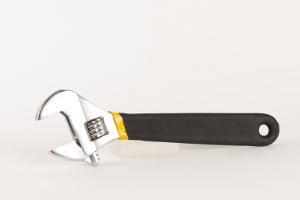 In this article we will discuss the different maintenance methodologies that we can define and apply in our real estate asset according to the physical characteristics, use and activity of the same.
In this article we will discuss the different maintenance methodologies that we can define and apply in our real estate asset according to the physical characteristics, use and activity of the same.
By Jordi Sánchez Castilla*
As property managers, the maximum profitability of the asset is sought, without this being to the detriment of the tenants / companies that occupy and have activity in it. This profitability is the one that will have to respond to the expectations of the owners of the properties that have made an investment in the asset with an expected return value.
An income statement that can be managed to manage a property can have the following concepts:
- Income: Rental income (in case of being an asset put for rent)
- Costs. We could divide into several types: Costs associated with fee payments, insurance, bank loans, marketing, promotion, etc. Costs associated with Renovations-remodeling, CAPEX (Capital Expenditure). Costs associated with the operational and management part: Services such as maintenance, cleaning, security, catering, waste management, utilities.
IT (Information Technology) costs associated with the asset.
- Questions and answers
Within one of the cost chapters, we have the subject that concerns us in this article, the maintenance of the asset, and we can ask ourselves questions such as the following: What result is sought from the operation of the facilities (facilities from now on) and their equipment by the owner of the asset?
Give satisfaction to its users (companies / tenants), this means that the facilities work in such a way that they offer a pleasant working environment, through an efficient operation and maintenance of them. The above resulting, for example, a satisfactory luminosity according to the activity that is performed, good thermal sensation, excellent purity of indoor air, responsible waste management, adaptability, flexibility, capacity of the facilities to the required needs, among others, that helps these companies / tenants, in the part that touches it, to stimulate their satisfaction through offering a pleasant environment where they can exploit their full potential in the tasks they perform.
What can a good asset management policy bring to its owner, through maintenance in this case?
- A better impact of the asset its environment.
- Greater uniqueness of the asset with respect to others.
- Possibility of more income from rents as it is an asset that offers a more efficient environment to develop activities in it.
- Lower insurance costs, being a more reliable asset.
How do facilities work during the asset lifecycle?
The usual life cycle of facilities consists of three stages. A first stage or childhood of the facilities, second stage of maturity of the facilities and third stage of old age of the facilities.
First stage: It is characterized by a high degree of failures initially followed by a period of decrease, the initial failures can be motivated by design defects of the equipment, defects due to the installation of the same, or defects due to poor operation.
Second stage: The longest period in the useful life of the facilities and where the failures are stabilized with a relatively low rate of the same, in case the planning of the maintenance and the operation of the facilities is as adjusted and efficient as possible according to the activity and use of the same based on the requirements of the organization.
This period can be extended even further in case of a good approach and program of maintenance and operation; properly combining preventive, predictive and reliability maintenance programs according to the use and importance of the elements that make up the facilities system.
The above together with an operation based on an environment as lean as possible will make this stage very productive, and where you can achieve very good efficiency of the facilities.
Third stage: Where due to the useful life of the facilities, due to their wear, the number of failures of the same increases. Before this stage becomes more acute, which produces a wear and tear on the income statement, it must be focused and studied which facilities can be reused with a series of adjustments or which should be replaced by new ones definitively.
Based on the three periods of the life cycle of the facilities discussed above, an O&M (Operation and Maintenance) plan must be established, based on the actual activity and use that each component that makes up the facilities system really has according to its role in the productive process of the organization.
With the above, not always the same type of maintenance and operation is suitable for any type of machinery and cycle. The different types of existing maintenance have to be combined to extract maximum efficiency from the facilities, the following being the same:
- Corrective Maintenance
- Preventive Maintenance
- Predictive Maintenance
- Maintenance based on reliability
Next we will describe each of them and the pros and cons they have at a general level, since according to specific activity and use in each organization there may be different variants.
Reactive Maintenance:
It is a type of maintenance that does not require any type of action on the facilities while they operate, they are allowed to operate until they break down, waiting with some luck that they meet the life cycle indicated by the manufacturer of the same, and then action is taken to repair them.
Looking for the advantages of this way of proceeding, they can be understood based on a new installation, where the facilities are expected to have a low failure rate, so that with this methodology you can save maintenance costs, although it is a short-term vision according to the importance that these facilities may have in the operation of the organization.
It is also possible to detect equipment that due to its low weight in the production system and its relative low cost of change, it can be considered that operating and maintaining them based on a corrective mentality is the best way not to incur costs that do not provide a sensitive added value to the production process.
Advantages of this approach:
- Low cost
- Small number of staff
Disadvantages of this approach:
- Increase in cost due to downtime of machinery that suffers breakdowns.
- Increase in cost in case of repairs to be carried out outside normal business hours.
- Cost related to the replacement and repair of the equipment. Increase in stocks.
- Low productivity of the personnel assigned to maintenance.
- Possible side effects produced in other equipment of the system, dependent / associated with the operation of the breakdown.
Preventive Maintenance:
It is understood as the maintenance action carried out on an equipment based on a temporary programming predefined to its real activity, or according to its operation, with the aim of detecting and minimizing the degradation of any component / s of the equipment that helps extend its useful life, through maintaining at acceptable levels for its operation the degradation of the same.
Advantages of this approach:
- Its profitability for facilities with a great impact of invested capital.
- The flexibility that allows to adjust the review periods according to the use of the equipment.
- Increase in the life cycle of the equipment components.
- Energy saving.
Disadvantages of this approach:
- More intensive expenditure on maintenance personnel compared to corrective maintenance.
- Performing maintenance tasks that may not be necessary in the estimated period.
- Potential damage that can be caused to the equipment when performing maintenance tasks that are not necessary in the estimated period.
- Sensitive failures can still happen in the facilities.
Predictive Maintenance:
It can be defined as the type of maintenance that performs measurements that detect from the beginning the causes that originate the degradation of the components of the facilities, which leads to be able to eliminate or control these degrading causes avoiding that a very sensitive degradation occurs in the facilities that leads to a stoppage of the same.
It mainly distinguishes itself from preventive maintenance by basing its revision program on the actual condition of the equipment and not on a temporarily predetermined schedule without taking into account the actual operating condition of the equipment.
Advantages of this approach:
- Increase in operational life and availability of facilities components.
- Reduction of the downtime of the facilities.
- Reduction of expenditure on spare parts and labor.
- A better quality of the service performed by the facilities is obtained.
- A safer environment is obtained for the operator who manipulates the facilities.
- Energy savings.
- Greater productivity of maintenance personnel.
- Elimination/very important reduction of sensitive equipment failures.
Disadvantages of this approach:
- Greater investment in diagnostic equipment than in preventive maintenance (MP)
- Greater investment in staff training than in the MP.
- Savings not easily perceived immediately by the Management Committee.
Reliability-based maintenance
It is the methodology that deals with aspects not contemplated by the previous three types of maintenance commented, this discipline recognizes that not all the equipment that makes up an installation have the same importance for the service they perform or the production process to which they belong, according to the activity of the organization.
It also recognizes that the functional idea of facilities in their design phase may differ from their actual operations, and that difference increases the likelihood of degradation to varying degrees of the various components that make up the facilities.
Maintenance based on reliability is highly dependent on predictive maintenance, but it also recognizes that there are no unlimited physical and economic resources, therefore in facilities that are not so critical to the activity of the organization other maintenance programs other than predictive can be assigned to them according to their level of impact on said activity (we talk about preventive and corrective maintenance).
Advantages of this approach:
- It may be the most efficient maintenance program.
- Very significant reduction of the cost of maintenance by eliminating unnecessary maintenance and unscheduled stops of the facilities.
- Reduction of the probability of sudden stops of the facilities due to their failures.
- Awareness of focusing maintenance resources according to the criticality of the components of the facilities.
- Increase in the reliability of the facilities.
- Incorporates root cause analysis to the facilities system.
Disadvantages of this approach:
- Volume of investment in the start-up of this type of program, in staff training, in measurement equipment, cultural change in O&M activities and in general in the organization.
- Savings not easily perceived immediately by the Management Committee.
Conclusions
With the above and in order to obtain the maximum profitability in your asset, touching in this article the chapter of costs associated with the operation and management of the same, chapter maintenance, it is vital to define a good maintenance program that can and should be a mix of the different methodologies presented in this article, in fact, the difficulty and success of a maintenance program as efficient and profitable as possible depends on what type of maintenance you assign to the equipment and components of the facility system that make up your production and service system, according to its weight in it.
* Jordi Sánchez Castilla is the Director of S&V Consulting, a consulting company specialized in the fields of Facilities, Asset and Property Management.


























Leave your comment